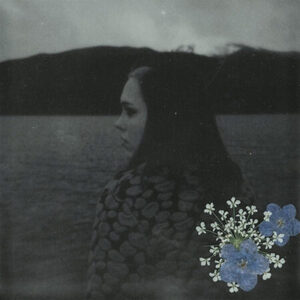
Asbury Park: Riot, Redemption, Rock ‘N Roll
directed by Tom Jones
starring Steven Van Zant, “Southside” Johnny Lyons, Bruce Springsteen
Trafalgar Releasing
A huge part of musical mythology is linked to location. Mention San Francisco and you’ll probably think of hippies, the Summer of Love and the Grateful Dead. Mention Detroit and you can’t help but think of Motown. Chicago has the blues, Memphis has soul and New Orleans has the funk. Asbury Park is the embodiment of the “Jersey Sound.”
Asbury Park has been a muse for some of Bruce Springsteen’s most memorable songs, from “10th Avenue Freeze Out” to “My City of Ruins.” “10th Avenue” celebrates the thriving music scene in the 1960’s. This is the scene that birthed the E Street Band, Southside Johnny and the Asbury Jukes and Little Steven and the Disciples of Soul. “My City” is a lament for the loss that followed riots that devastated the city in the summer of 1970. Like other American cities, the riots heralded a long period of decline with loss of business, population and civic pride. The scars left by the riots have lingered for decades.
Director Tom Jones tells the story of Asbury Park through interviews, archival photos, home movies and news footage. The first part of the film takes us through the development of Asbury Park as a thriving seaside resort community. Famous faces like Bruce Springsteen and Little Steven are joined by less well known musician and local residents to tell stories about the beach clubs on the east side of town and the jazz and blues clubs over on the west. Southside Johnny compares the town he grew up to a carnival of music and vice.
A lot of time is devoted to the Upstage Club. The club was an after-hours spot where musicians could hang out and jam after they finished their paying gigs. The Upstage has amplifiers and speakers built into the stage to make it easy for musicians to play the third floor walk up venue. It was at these all night jam sessions that future members of the E Street Band and the Asbury Jukes honed their craft.
The middle section is devoted to the riots that rocked the summer of 1970 and the decline that followed. Springwood Avenue was the heart of Asbury Park’s black community. The blues and jazz clubs along Springwood were an important element in making the city a go-to music destination. Springwood Avenue was heavily damaged in the riots the rocked the summer of 1970. In the years that followed, structures were torn down and never replaced leaving a gaping hole in the community.
The movie ends with the ongoing revival of Asbury Park. Jones spends a lot of time at Lakehouse Studios is a music school that serves as an incubator for new talent. Other indicators of revival are reopened theaters, new shops and restaurants (many opened by members of the gay community) and The Light of Day Festival, which returned music to Springwood Avenue after more than 40 years.
I admire the passion poured into this movie. You really feel the pride people have for Asbury Park’s past and their hope for the city’s future. The team that made Asbury Park may actually be too close to their subject. They assume that people are going to know things that are implied in the film. For example, when they are discussing the Upstage Club, they show clippings of ads for gigs by a band called Steel Mill. Nowhere in the film do they make the connection that Steel Mill was the group Springsteen led before striking out on a solo career. It would have been nice to see that connection made for the many who will see the film who are not as well versed in Jersey music lore. Another example is how long they dwell on The Upstage Club. Bruce Springsteen, Southside Johnny, Gary Tallent and Little Steven tell how important the club was to them. Hosts of other people tell practically the same stories about the venue. It feels like the film makers wanted to make all their friends got their moment on screen.
My biggest lament is that Asbury Part tells us more about the city and the music scene than it shows. We are told about a proto-punk band that made waves called Margaret and the Distractions, but no film is shown and no music is played. Many people tell us about the 1970 riots, but most of the visuals are newspaper clippings floating across the screen. I’m sure there has to be more dramatic film tucked away in TV station vaults somewhere.
Asbury Park: Riot, Redemption, Rock ‘N’ Roll tells a good story. It’s a film that will resonate best with the residents of Asbury Park and the truest fans of the Jersey Sound. It may not play as well to others, less familiar with the area, but gives them a place to start picking up the legend of the seaside resort on the Jersey Shore.












